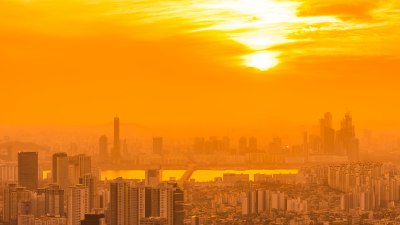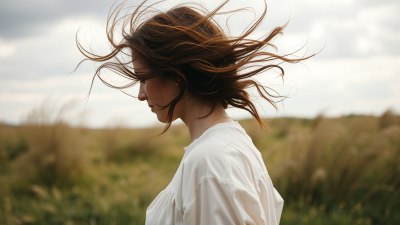How Seasonal Light Impacts Your Photography Style and Mood
Explore how seasonal light influences your photography style and enhances mood in images.

Photography, as an art form, is deeply intertwined with light. The way light interacts with your subject can dramatically alter the mood of your photographs. Seasonal changes bring about variations in natural light, which can change not only the colors in your images but also the emotions they evoke. In this article, we will explore how seasonal light impacts your photography style and the moods you can convey in your images.
Understanding Light in Photography
To understand how seasonal light affects photography, one must first recognize the significance of light itself. Light can define shapes, set a mood, and create depth in photographs. Different times of the day present various qualities of light. The photographer’s ability to manipulate light can turn an ordinary scene into a powerful image. Seasonal changes add another level of complexity and beauty to this manipulation.
Winter: The Season of Contrast
Winter is a season that can be characterized by stark contrasts. The cold, hard light can create sharp edges and high contrast scenes, making winter an excellent backdrop for dramatic photography. Snow-covered landscapes reflect light beautifully, often enhancing brightness and purity in images. Photographers can take advantage of this clarity and brightness to create striking visual narratives.
In addition to landscapes, winter is also a time when colors can become muted. For instance, a monochromatic palette might dominate your photography, allowing for compositions that emphasize form and texture over color. The low angle of the sun during winter months creates long shadows, adding depth to your shots. It’s also worth noting that winter photography can evoke feelings of solitude and reflection, perfect for storytelling.
Spring: A Renaissance of Color
As spring arrives, the light begins to warm up, and nature bursts back into life. This season is characterized by soft, diffused light, which is incredibly flattering for portrait photography. The longer days and vibrant colors of blooming flowers and lush greenery provide endless opportunities for capturing stunning images. The new beginnings associated with spring can be conveyed through lively and cheerful photography, as the essence of growth and renewal permeates the air.
This season is also an excellent time for experimentation. Photographers can explore macro photography to capture the details of flowers and insects emerging from their winter slumber. The vibrant colors associated with spring can inspire an array of moods from jubilant to serene. Furthermore, the rains of spring create opportunities for reflecting pools that amplify the beauty of your photographs.
Summer: Bright and Vibrant
Summer is often regarded as the quintessential time for vibrant photography due to the intense and bright natural light available throughout the long days. This can create brilliantly colored images; however, it’s essential to manage the bright conditions effectively. Utilizing the golden hour, right after sunrise and before sunset, can yield soft textures and warm tones, perfect for various styles, including landscape, travel, and lifestyle photography.
Moreover, summer often evokes feelings of joy, adventure, and freedom. Photographers can harness this energy through dynamic compositions filled with spontaneity. Sunlight can create dramatic shadows and highlights, enhancing the overall aesthetics of your images. Incorporating summer activities, such as beach outings or hiking adventures, can further capture the essence of a lively season.
Autumn: A Time of Transition
Autumn presents unique lighting and moods owing to the gradual transition toward winter. The light in autumn can be both warm and rich, giving rise to spectacular sunsets and sunrises that paint the sky in shades of orange and red. The change in foliage introduces a plethora of colors, enhancing your photographs with a sense of warmth and nostalgia.
Photography in autumn can be about capturing fleeting moments of beauty, reflecting on both transitions and endings. The softer light during this season allows for gentler contrasts, giving portraits a warm, inviting feel. Additionally, misty mornings can add a layer of mystery to landscape photography, presenting a romanticized texture in images that speaks of the season’s impending completion.
Techniques for Photographing Seasonal Light
To leverage seasonal light in your photography, it's important to understand how to adjust your settings and use techniques that best capture the essence of the season. Here are a few tips:
1. Golden and Blue Hour: Always be on the lookout for the golden and blue hours, typically occurring right after sunrise and before sunset. These times offer the best quality of light for warm, ethereal images.
2. Adjust Your Settings: Be mindful of your camera settings. In bright conditions, ensure your aperture is narrow to prevent overexposure. Conversely, in muted environments, wider apertures can help create fine portraits with beautiful bokeh.
3. Use Natural Reflectors: Take advantage of reflective surfaces to enhance light quality. Water bodies, snow, and even cream-colored walls can all help bounce light onto your subjects.
4. Experiment and Adapt: Don't be afraid to experiment with different lighting conditions. Take your camera outside regularly and shoot under various times of day and every season. The more you adapt to light changes, the more naturally you’ll adapt your style.
Choosing a Style Based on the Season
Your photography style may evolve as the seasons change. For instance, winter might prompt you to lean towards stark, minimalist compositions, whereas spring might inspire you towards colorful, dynamic imagery. Summer can push for candid moments filled with energy and movement, while autumn's warmth may encourage you to focus on storytelling and nostalgia.
It hasn’t been uncommon for photographers to develop specific styles for each season as an identity. For example, a photographer may specialize in capturing outdoor adventure lifestyles in summer but transition to moody, reflective portraits in winter. Recognizing and embracing these shifts can make the storytelling aspect of your work even more compelling.
The Emotional Impact of Seasonal Light
The effect of seasonal light doesn't just enhance the aesthetic of your photographs; it also evokes specific emotions in your viewers. Colors have psychological effects: for example, warm colors like red and orange can provoke excitement, while cooler colors such as blue and green can induce calmness and serenity.
By understanding how to manipulate and work with seasonal light, photographers can elevate their work beyond mere visuals, crafting images that resonate with the viewer on a deeper emotional level. A winter image adorned in crisp whites may invoke lonely feelings while a spring landscape awash in vibrant pastels can elicit longing and joy.
Seasonal light is a fundamental aspect of photography, capable of changing not just the composition of a shot but also the entire mood and story delivered through the image. By recognizing how light interacts with subjects and surroundings across different seasons, photographers can develop their unique style and effectively convey emotions. Whether capturing the stark beauty of winter or the vibrant energy of summer, understanding seasonal light will undoubtedly enhance your photography and help create impactful visual narratives.











